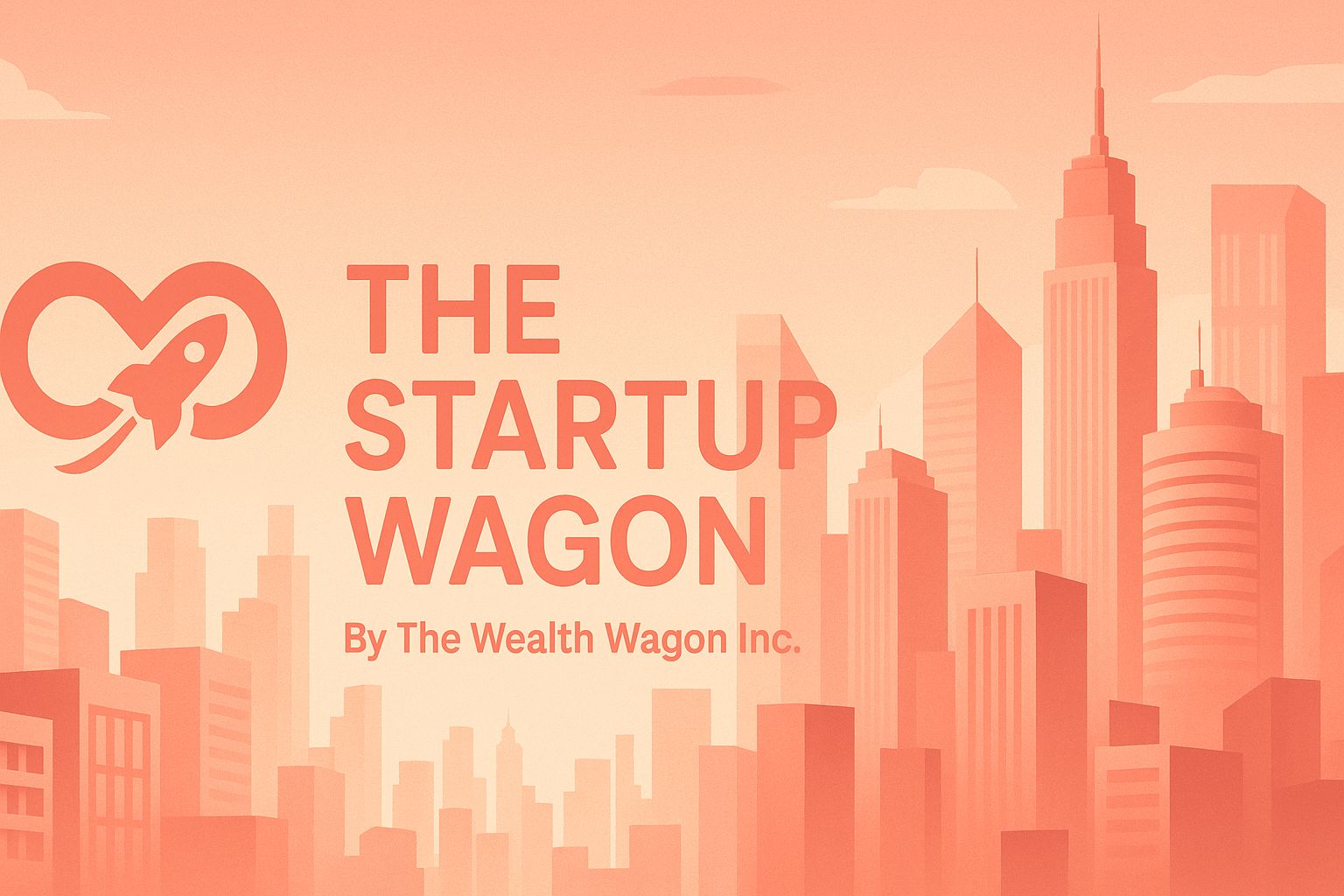- The Startup Wagon
- Posts
- Your Daily Dose Of Knowledge - #9 - November 3, 2025
Your Daily Dose Of Knowledge - #9 - November 3, 2025
Read More
November 3, 2025

Welcome Back,
Hi there
Good morning! In today’s issue, we’ll dig into the all of the latest moves and highlight what they mean for you right now. Along the way, you’ll find insights you can put to work immediately
— Ryan Rincon, Founder at The Wealth Wagon Inc.
If you subscribed by accident or wish to no longer receive our content click here to un-subscribe →
PRESENTED BY I HATE IT HERE
The best HR advice comes from people who’ve been in the trenches.
That’s what this newsletter delivers.
I Hate it Here is your insider’s guide to surviving and thriving in HR, from someone who’s been there. It’s not about theory or buzzwords — it’s about practical, real-world advice for navigating everything from tricky managers to messy policies.
Every newsletter is written by Hebba Youssef — a Chief People Officer who’s seen it all and is here to share what actually works (and what doesn’t). We’re talking real talk, real strategies, and real support — all with a side of humor to keep you sane.
Because HR shouldn’t feel like a thankless job. And you shouldn’t feel alone in it.
Today’s Post
Defining Your Go-To-Market (GTM) Strategy: The Roadmap to Getting Customers Fast
So, you’ve built something great — maybe a product, an app, or a service that actually solves a real problem.
Now comes the million-dollar question:
“How do I get this into people’s hands… and get them to pay for it?”
That’s where your Go-To-Market (GTM) strategy comes in.
A GTM strategy is your blueprint for how you’ll reach your target customers, communicate your value, and ultimately generate sales. It’s not just marketing — it’s how your business enters the world and wins early traction.
Let’s walk through what makes a great GTM strategy and how to build one step by step.
1. Understand What a GTM Strategy Actually Is
Many founders confuse GTM with marketing or sales — but it’s bigger than both.
A Go-To-Market strategy connects:
Your target audience (who you’re selling to)
Your value proposition (why they should care)
Your distribution channels (how you reach them)
Your sales model (how you close deals and make money)
In short: it’s how your product meets your market — and succeeds.
Without one, even the best product can flop.
“There’s no such thing as a great product with no market. There are only great markets that reward great products.” — Marc Andreessen
2. Start With Your ICP (Ideal Customer Profile)
Before you decide how to sell, you need to know who you’re selling to.
Ask yourself:
Who has the pain point my product solves?
What industries or roles feel that pain the most?
What do they care about — saving time, saving money, or looking smart?
Your Ideal Customer Profile (ICP) should include:
Company size
Industry
Location
Budget
Key decision-maker (the person who signs the check)
✅ Example: If you’re selling workflow automation software, your ICP might be small-to-midsize marketing agencies that need to save time on client reporting.
3. Nail Your Value Proposition
Your value proposition is your startup’s “why us?” moment.
It should clearly explain what you do, for whom, and why it matters — in one or two sentences.
A simple framework: “We help [target audience] achieve [specific benefit] by [unique approach].”
Example: “We help small e-commerce brands increase repeat purchases by automating customer rewards with zero code.”
Avoid buzzwords. Be clear. Be human. If your customers can’t explain what you do to someone else in 10 seconds, it’s too complicated.
4. Choose Your GTM Model: Top-Down, Bottom-Up, or Product-Led
Not all GTM motions are created equal. The best one depends on your product and audience.
Here are the main three types:
Sales-Led (Top-Down):
Great for B2B, complex, or high-ticket products.
You’ll need a sales team, demos, and longer buyer cycles.
Example: Salesforce or HubSpot Enterprise.
Product-Led (Bottom-Up):
Users discover and adopt your product on their own.
Relies on a free tier, viral loops, or freemium models.
Example: Slack, Canva, or Notion.
Marketing-Led:
Works for consumer or e-commerce startups.
Focuses on storytelling, branding, and digital acquisition channels (ads, SEO, influencers).
Example: Glossier or Duolingo.
Many startups mix and match — the key is to pick one main motion first and master it before layering others on.
5. Pick Your Early Acquisition Channels
You can’t be everywhere — at least not yet. Start with 2–3 channels where your ICP already hangs out.
Some of the best early-stage channels include:
Cold outbound (email or LinkedIn) — works for B2B startups.
Paid ads — quick testing, but can get expensive.
Content marketing — builds authority and trust over time.
Partnerships and communities — faster credibility and access to shared audiences.
Referrals — especially if your product has a viral or shareable component.
Pro tip: Track early results ruthlessly. The first 90 days are about testing, not scaling. Double down on what works; ditch what doesn’t.
6. Align Your GTM Across Teams
A GTM strategy fails when teams work in silos.
Marketing is promising one thing, sales is selling another, and the product team is building something else entirely.
To fix that:
Make sure everyone agrees on the same ICP and value proposition.
Set shared goals (like “20 qualified demos per week” instead of “more leads”).
Create feedback loops — what sales learns from customers should feed product and marketing.
A strong GTM isn’t just a plan — it’s alignment in motion.
7. Measure, Iterate, and Improve
The best GTM strategies evolve as you learn.
Track metrics like:
Customer acquisition cost (CAC)
Conversion rate by channel
Churn rate
Sales cycle length
Lifetime value (LTV)
If something’s not working, don’t panic — pivot. The first GTM version is rarely perfect.
What matters is speed of learning and execution.
“Your first GTM plan won’t survive first contact with customers — but your team will, if they’re adaptable.”
Final Thought
A solid GTM strategy doesn’t just get you customers — it gives your startup direction.
It’s how you turn a great product into a growing company.
So before you spend another dollar on marketing or build another feature, ask yourself:
“Do I know who I’m selling to, where they are, and how I’ll reach them?”
Because clarity isn’t just a competitive advantage — it’s your launch fuel. 🚀
The Wealth Wagon’s Other Newsletters:
The Wealth Wagon – Where it all began, from building wealth to making money – Subscribe
The AI Wagon – AI trends, tools, and insights – Subscribe
The Economic Wagon – Global markets and policy shifts – Subscribe
The Financial Wagon – Personal finance made simple – Subscribe
The Investment Wagon – Smart investing strategies – Subscribe
The Marketing Wagon – Growth and brand tactics – Subscribe
The Sales Wagon – Selling made strategic – Subscribe
The Startup Wagon – Build, scale, and grow – Subscribe
The Tech Wagon – Latest in tech and innovation – Subscribe
Side Hustle Weekly - Actionable side-hustle ideas and income tips - Subscribe
That’s All For Today
I hope you enjoyed today’s issue of The Wealth Wagon. If you have any questions regarding today’s issue or future issues feel free to reply to this email and we will get back to you as soon as possible. Come back tomorrow for another great post. I hope to see you. 🤙
— Ryan Rincon, CEO and Founder at The Wealth Wagon Inc.
Disclaimer: This newsletter is for informational and educational purposes only and reflects the opinions of its editors and contributors. The content provided, including but not limited to real estate tips, stock market insights, business marketing strategies, and startup advice, is shared for general guidance and does not constitute financial, investment, real estate, legal, or business advice. We do not guarantee the accuracy, completeness, or reliability of any information provided. Past performance is not indicative of future results. All investment, real estate, and business decisions involve inherent risks, and readers are encouraged to perform their own due diligence and consult with qualified professionals before taking any action. This newsletter does not establish a fiduciary, advisory, or professional relationship between the publishers and readers.

